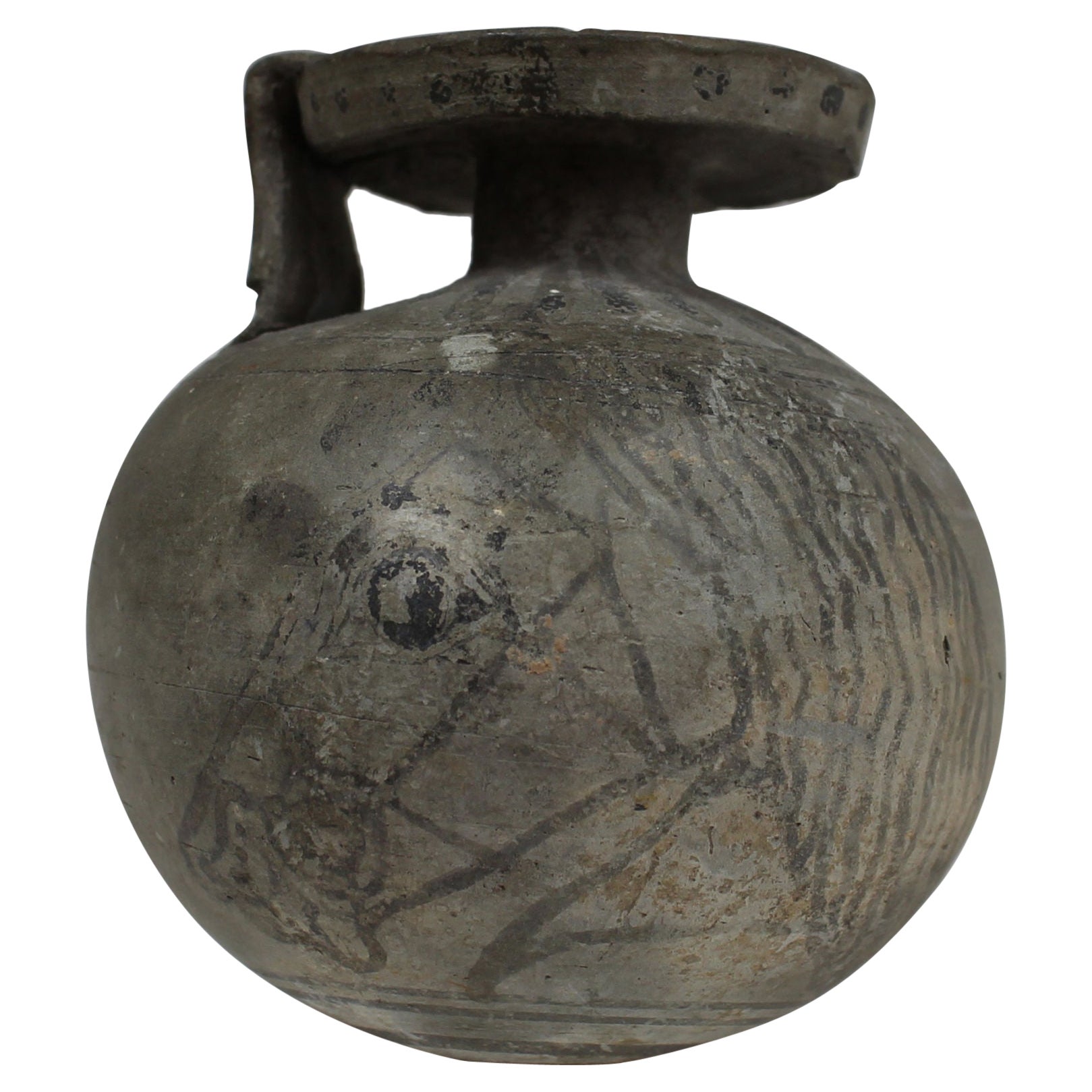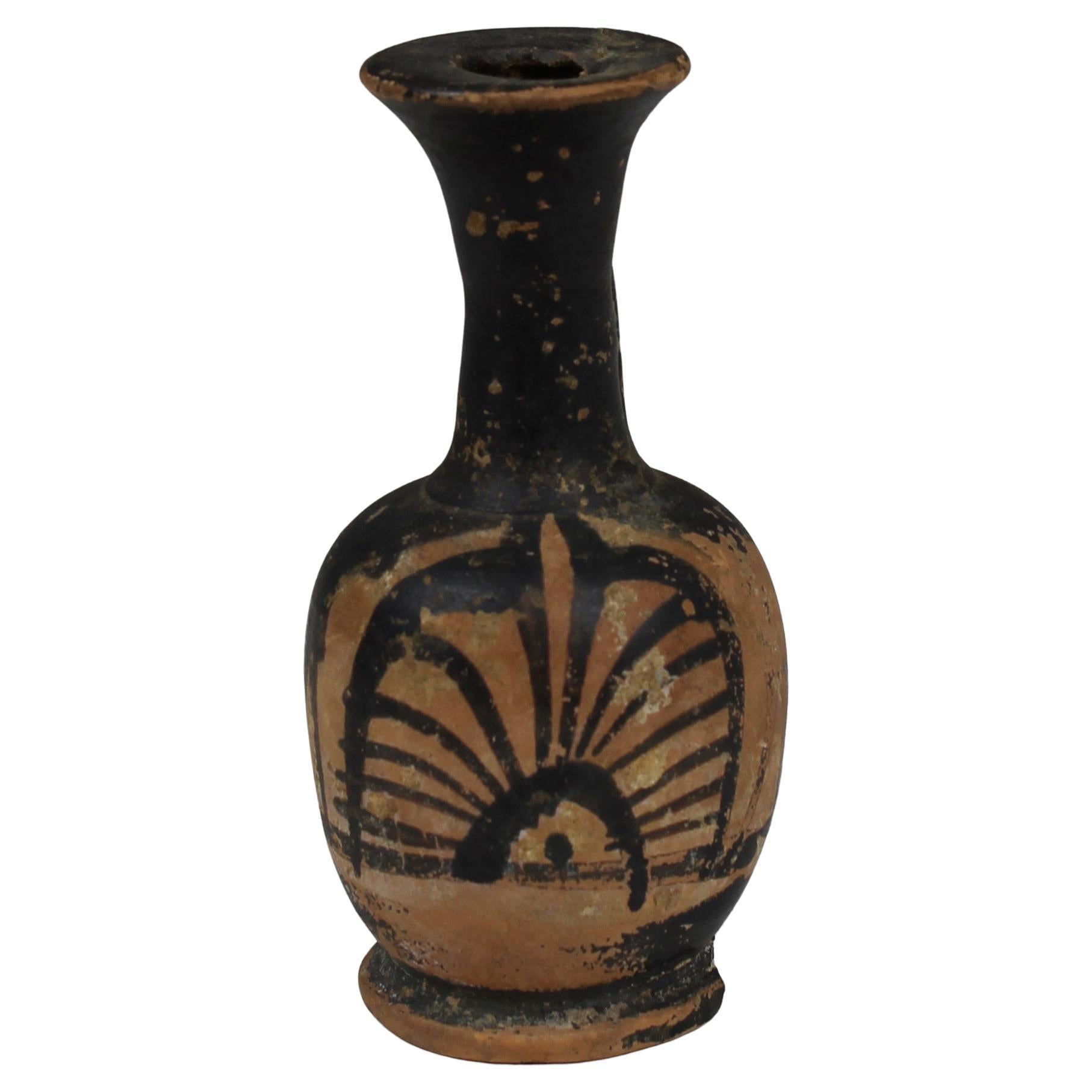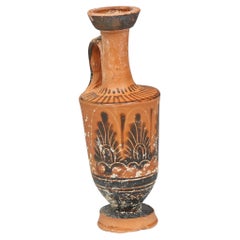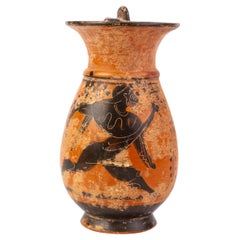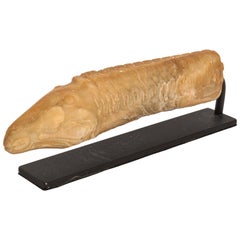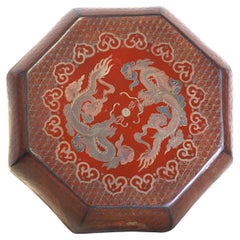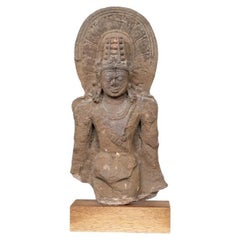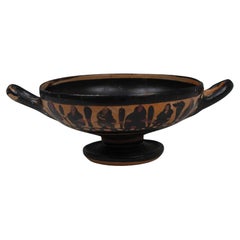
Greek kylix
View Similar Items
Want more images or videos?
Request additional images or videos from the seller
1 of 9
Greek kylix
About the Item
- Dimensions:Height: 2.21 in (5.6 cm)Width: 6.5 in (16.5 cm)Depth: 4.53 in (11.5 cm)
- Style:Classical Greek (Of the Period)
- Materials and Techniques:
- Place of Origin:
- Period:
- Date of Manufacture:4th Century B.C
- Condition:Wear consistent with age and use.
- Seller Location:EL CAMPELLO, ES
- Reference Number:1stDibs: LU7382238701812
About the Seller
5.0
Gold Seller
These expertly vetted sellers are highly rated and consistently exceed customer expectations.
Established in 2011
1stDibs seller since 2022
11 sales on 1stDibs
Typical response time: 8 hours
Authenticity Guarantee
In the unlikely event there’s an issue with an item’s authenticity, contact us within 1 year for a full refund. DetailsMoney-Back Guarantee
If your item is not as described, is damaged in transit, or does not arrive, contact us within 7 days for a full refund. Details24-Hour Cancellation
You have a 24-hour grace period in which to reconsider your purchase, with no questions asked.Vetted Professional Sellers
Our world-class sellers must adhere to strict standards for service and quality, maintaining the integrity of our listings.Price-Match Guarantee
If you find that a seller listed the same item for a lower price elsewhere, we’ll match it.Trusted Global Delivery
Our best-in-class carrier network provides specialized shipping options worldwide, including custom delivery.More From This Seller
View AllGreek bowl depicting a swan
Located in EL CAMPELLO, ES
ITEM: Bowl depicting a swan
MATERIAL: Pottery
CULTURE: Greek, South Italian colonies
PERIOD: 4th Century B.C
DIMENSIONS: 65 mm x 161 mm diameter
CONDITION: Good condition
PROVENANCE:...
Category
Antique 15th Century and Earlier Greek Classical Greek Antiquities
Materials
Pottery
Greek lekythos with palmettes
Located in EL CAMPELLO, ES
ITEM: Lekythos with palmettes
MATERIAL: Pottery
CULTURE: Greek
PERIOD: 5th Century B.C
DIMENSIONS: 118 mm x 44 mm diameter
CONDITION: Good condition
PROVENANCE: Ex German private col...
Category
Antique 15th Century and Earlier Greek Classical Greek Antiquities
Materials
Pottery
Greek aryballos depicting a horse head
Located in EL CAMPELLO, ES
ITEM: Aryballos depicting a horse head
MATERIAL: Pottery
CULTURE: Greek, Corinthian
PERIOD: 7th Century B.C
DIMENSIONS: 62 mm x 55 mm diameter
CONDITION: Good condition
PROVENANCE: E...
Category
Antique 15th Century and Earlier Greek Classical Greek Antiquities
Materials
Pottery
Greek aryballos with quatrefoil motif
Located in EL CAMPELLO, ES
ITEM: Aryballos with quatrefoil motif
MATERIAL: Pottery
CULTURE: Greek
PERIOD: 6th Century B.C
DIMENSIONS: 70 mm x 63 mm
CONDITION: Good condition
PROVENANCE: Ex Swiss private collec...
Category
Antique 15th Century and Earlier Greek Classical Greek Antiquities
Materials
Pottery
Greek squat lekythos with palmette
Located in EL CAMPELLO, ES
ITEM: Squat lekythos with palmette
MATERIAL: Pottery
CULTURE: Greek
PERIOD: 5th – 4th Century B.C
DIMENSIONS: 91 mm x 42 mm
CONDITION: Good condition
PROVENANCE: Ex French private collection, acquired between 1980s
PARALLEL: BRITISH MUSEUM Collection, Accession number 11.46019
Comes with Certificate of Authenticity and Export license (If you live outside the European Union, We will have to apply for an export licence for your country and shipping will take 3 to 5 weeks.)
Lekythoi are a specific type of oil flask...
Category
Antique 15th Century and Earlier Greek Classical Greek Antiquities
Materials
Pottery
Greek statuette of an enthroned woman
Located in EL CAMPELLO, ES
ITEM: Statuette of an enthroned woman
MATERIAL: Pottery
CULTURE: Greek, Hellenistic period
PERIOD: 3rd – 1st Century B.C
DIMENSIONS: 144 mm x 52 mm
CONDITION: Good condition
PROVENAN...
Category
Antique 15th Century and Earlier Greek Classical Greek Antiquities
Materials
Pottery
You May Also Like
Ancient Greek Attic Terracotta Jug Classical ca. 400 BC
Located in Nottingham, GB
In good condition
From a private collection overall
Category
Antique 15th Century and Earlier Antiquities
Materials
Terracotta
Ancient Antique Carved Marble Greco-Bactrian Hippocampus Horse 2nd Century BC
Located in Portland, OR
A rare Greco-Bactrian alabaster carving of a Hippocampus (Hippocamp) from antiquity, Central Asia or Afghanistan, circa 200 BCE.
Finely carved from banded alabaster as a hippocampus ...
Category
Antique 15th Century and Earlier Central Asian Classical Greek Antiquities
Materials
Alabaster
Chinese Red Lacquer Octagonal Box
Located in West Palm Beach, FL
Chinese Red Lacquer Octagonal Box
The top is decorated with dragons, each side with an auspicious symbol.
Height 7.5 in. (19.05 cm.), Diameter 17 in. (4...
Category
20th Century Antiquities
Materials
Other
Ancient Indian Red Sandstone Relief Of The Hindu God Vishnu
Located in Bridgeport, CT
Exceptional Antique Carved Stone Bust of Vishnu Mounted On a Wooden Base. Ca. 7th-12th Century AD. An ancient carved stone sculpture depict...
Category
Antique 15th Century and Earlier Asian Agra Antiquities
Materials
Sandstone
Japanese Imari plate from Arita
Located in Oostende, BE
Japanese Imari plate from Arita. Arita (有田) is a small town in western Saga Prefecture on Kyushu that is famous throughout Japan for its pottery, known as Arita-yaki.
This plate dat...
Category
Antique Late 19th Century Japanese Meiji Antiquities
Materials
Ceramic
19th Century, Mandalay, Antique Burmese Wooden Standing Buddha
Located in Sampantawong, TH
Antique Burmese wooden Buddha standing on a lotus base, with gilded gold and inlay of colorful glass pieces on the headband and the borders of the robe.
Age: Burma, Mandalay Period,...
Category
Antique 19th Century Burmese Antiquities
Materials
Wood
Recently Viewed
View AllMore Ways To Browse
Used Furniture Greece
Greek Antique
Antique Greek
Greek Antique Furniture
Antique Furniture Greece
Antique Greek Furniture
Greek Style Furniture
Greek Classical
Ancient Antiquities
Ancient Greece Furniture
Ancient Greek Furniture
Figural Pottery
Wine Sofa
Drinking Cups
Greek Antiquity
Greek Mythological
Asian Men
Antique Entertainment


